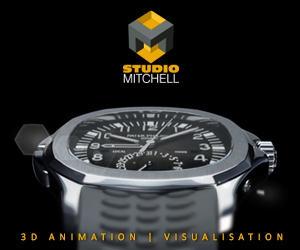Broadcast News
02/11/2017
Broadcasters & Post Production Facilities Digitising Legacy Tape Formats

The first in a series of articles by Pat Horridge of VET Training covering the issues facing broadcasters and post houses needing to digitise legacy tape formats.
Pat, a former broadcast service engineer then technical director of the Shoreditch based VET post house, now delivers broadcast and post house QC training and Avid workflows on site for clients. Along with post production overview courses and general understanding digital media training. Full details at the VET website www.vet.co.uk.
Some of the information provided is also common to restoration and archiving however the needs of broadcast TV are less demanding and the information in these articles is based on the assumption that the process is for TV ingest. For Archiving purposes the situation is often more complex and demands a more robust workflow, often for a greater volume of content.
Having worked specifically for organisations dealing with archiving legacy content the selection of playback equipment has more to do with achieving the best quality playback and protection of the tapes than a cost effective "ok for TV" approach.
This is covered in 5 articles:
• Legacy tape formats. What are they and how do we define them?
• How do we store audio/video content on magnetic tape?
• Aged tape considerations and solutions
• What could possibly go wrong using that old VTR to play my legacy tape?
• The ingest process for best results.
Legacy tape formats. What are they and how do we define them?
So what do we mean by legacy formats? For the most part these are tape formats that are not commonly in use in day to day post production. Mostly we should consider these to be analogue formats. But as time passes even the digital formats are becoming "legacy".
Before the move to file based delivery the broadcast TV & post production industries had relied upon a small number of manufacturers for the development and evolution of tape based recorders/players. This evolution goes back a long way covering a range of formats and some more than others have had an impact on TV & post production.
A brief overview of those formats and their evolution are:
Reel based 2" Quad machines in the late 50s early 60s but due to the high tape costs and compatibility issues there isn't a large collection of old recordings.
Cassette-based recorders which were far easier to use and handle content were introduced with Sony's ¾" U-matic in the early 70s. (¾ inch is the tape width).
In the UK we ended up with 3 U-matic versions, Low-band, High-band and High-band SP (The SP stands for Superior Performance).
Reel based 1" machines came in the late 70s and were produced by Ampex and Sony to replace the complex and difficult to manage 2" machines.
From there we moved into Betacam and Betacam SP cassette based VTRs. Panasonic had its MII format (late 80s) and that had some takers but Sony pretty much ruled the roost.
A number of digital cassette based formats like D1 (Sony), D2 (Ampex), D3 (Panasonic) came and went as replacements for the older reel to reel machines. A reasonable amount of content exists in these formats, particularly as a lot of interest was generated in using these new digital cassette based formats for archive with the BBC adopting D3 for its archives. 315,000 D3 archive tapes were generated by the BBC before D3 was declared obsolete in 2007 and the BBC started moving that content to file based.
Then we started to see Digital formats like DV, DVCAM, DVCPro and Sony's DigitBeta (launched early 90s). Sony's DigiBeta was popular as the "A" versions of the machines could playback analogue BetaSP tapes as well as the newer DigiBeta tapes.
That was all in the SD (Standard Definition) domain and was superseded by HD in the late 90s. There were a few HD Analogue formats but these didn't really impact on TV and broadcast.
For that we had to wait for HDCAM and DVCPro HD both of which were subsampled so not full 1920 pixels wide. That didn't come till HDCAM SR and this became the defacto Broadcast and Post deliverable format along with Panasonics D5.
And then of course we have a whole range of non-broadcast formats like: Betamax, VHS, SVHS, Hi8, Digital-8, Mini-DV, HDV and more. So, we have a rich and varied selection of formats spanning early analogue through to later digital formats.
It is impossible to estimate the billions of hours of video content that exists on these formats or how they are distributed. Some of that content will already have been digitised (captured and converted to file based content) although just how well that has been done and how representative the quality of the digital file is to the original source is open to speculation.
The tsunami that hit Japan in 2011 had a massive impact on the move away from tape based to file based delivery. The damaged caused to the Sony tape plant in Japan started to cause a shortage in HDCAM SR tape stock, a stable for broadcast delivery from post houses. As always the shortage was made worse by some of the bigger facilities buying bulk and stock piling.
Significantly, we already had file-based workflows. Many cameras already produced file based outputs, NLE systems worked with files and could output files and most broadcasters had moved to file based server playout systems. Tapes had been retained as the convenient "normalising" factor. Tapes also formed a useful bridge between different digital storage systems.
With the creation of the Digital Production Partnership we saw the standardisation and implementation of Broadcast file delivery in the form of AS-11 files in both SD and HD and it's been a very fast development to tapeless post houses. Tape has become the oddity rather than the norm. But broadcasters and post houses still have to access some of those billions of hours or content stored on tape formats.
In the next edition we'll be looking at how we actually store the content on magnetic tape so we can better understand the challenges of achieving accurate playback.
Article by Pat Horridge at VET Training.
www.vet.co.uk
(JP)
Pat, a former broadcast service engineer then technical director of the Shoreditch based VET post house, now delivers broadcast and post house QC training and Avid workflows on site for clients. Along with post production overview courses and general understanding digital media training. Full details at the VET website www.vet.co.uk.
Some of the information provided is also common to restoration and archiving however the needs of broadcast TV are less demanding and the information in these articles is based on the assumption that the process is for TV ingest. For Archiving purposes the situation is often more complex and demands a more robust workflow, often for a greater volume of content.
Having worked specifically for organisations dealing with archiving legacy content the selection of playback equipment has more to do with achieving the best quality playback and protection of the tapes than a cost effective "ok for TV" approach.
This is covered in 5 articles:
• Legacy tape formats. What are they and how do we define them?
• How do we store audio/video content on magnetic tape?
• Aged tape considerations and solutions
• What could possibly go wrong using that old VTR to play my legacy tape?
• The ingest process for best results.
Legacy tape formats. What are they and how do we define them?
So what do we mean by legacy formats? For the most part these are tape formats that are not commonly in use in day to day post production. Mostly we should consider these to be analogue formats. But as time passes even the digital formats are becoming "legacy".
Before the move to file based delivery the broadcast TV & post production industries had relied upon a small number of manufacturers for the development and evolution of tape based recorders/players. This evolution goes back a long way covering a range of formats and some more than others have had an impact on TV & post production.
A brief overview of those formats and their evolution are:
Reel based 2" Quad machines in the late 50s early 60s but due to the high tape costs and compatibility issues there isn't a large collection of old recordings.
Cassette-based recorders which were far easier to use and handle content were introduced with Sony's ¾" U-matic in the early 70s. (¾ inch is the tape width).
In the UK we ended up with 3 U-matic versions, Low-band, High-band and High-band SP (The SP stands for Superior Performance).
Reel based 1" machines came in the late 70s and were produced by Ampex and Sony to replace the complex and difficult to manage 2" machines.
From there we moved into Betacam and Betacam SP cassette based VTRs. Panasonic had its MII format (late 80s) and that had some takers but Sony pretty much ruled the roost.
A number of digital cassette based formats like D1 (Sony), D2 (Ampex), D3 (Panasonic) came and went as replacements for the older reel to reel machines. A reasonable amount of content exists in these formats, particularly as a lot of interest was generated in using these new digital cassette based formats for archive with the BBC adopting D3 for its archives. 315,000 D3 archive tapes were generated by the BBC before D3 was declared obsolete in 2007 and the BBC started moving that content to file based.
Then we started to see Digital formats like DV, DVCAM, DVCPro and Sony's DigitBeta (launched early 90s). Sony's DigiBeta was popular as the "A" versions of the machines could playback analogue BetaSP tapes as well as the newer DigiBeta tapes.
That was all in the SD (Standard Definition) domain and was superseded by HD in the late 90s. There were a few HD Analogue formats but these didn't really impact on TV and broadcast.
For that we had to wait for HDCAM and DVCPro HD both of which were subsampled so not full 1920 pixels wide. That didn't come till HDCAM SR and this became the defacto Broadcast and Post deliverable format along with Panasonics D5.
And then of course we have a whole range of non-broadcast formats like: Betamax, VHS, SVHS, Hi8, Digital-8, Mini-DV, HDV and more. So, we have a rich and varied selection of formats spanning early analogue through to later digital formats.
It is impossible to estimate the billions of hours of video content that exists on these formats or how they are distributed. Some of that content will already have been digitised (captured and converted to file based content) although just how well that has been done and how representative the quality of the digital file is to the original source is open to speculation.
The tsunami that hit Japan in 2011 had a massive impact on the move away from tape based to file based delivery. The damaged caused to the Sony tape plant in Japan started to cause a shortage in HDCAM SR tape stock, a stable for broadcast delivery from post houses. As always the shortage was made worse by some of the bigger facilities buying bulk and stock piling.
Significantly, we already had file-based workflows. Many cameras already produced file based outputs, NLE systems worked with files and could output files and most broadcasters had moved to file based server playout systems. Tapes had been retained as the convenient "normalising" factor. Tapes also formed a useful bridge between different digital storage systems.
With the creation of the Digital Production Partnership we saw the standardisation and implementation of Broadcast file delivery in the form of AS-11 files in both SD and HD and it's been a very fast development to tapeless post houses. Tape has become the oddity rather than the norm. But broadcasters and post houses still have to access some of those billions of hours or content stored on tape formats.
In the next edition we'll be looking at how we actually store the content on magnetic tape so we can better understand the challenges of achieving accurate playback.
Article by Pat Horridge at VET Training.
www.vet.co.uk
(JP)
Top Related Stories
Click here for the latest broadcast news stories.
09/02/2024
Sky Brings Together Sky Content And Sky Studios
Sky has announced that all of its non-sports content teams in the UK & Ireland, will come together under one leadership structure, led by Cécile Frot-
Sky Brings Together Sky Content And Sky Studios
Sky has announced that all of its non-sports content teams in the UK & Ireland, will come together under one leadership structure, led by Cécile Frot-
13/03/2023
MwareTV Offers Complete Content Management And Delivery Service
MwareTV has joined in partnership with a US content provider to deliver a complete one-stop service for ISPs, multi-dwelling organisations and more in
MwareTV Offers Complete Content Management And Delivery Service
MwareTV has joined in partnership with a US content provider to deliver a complete one-stop service for ISPs, multi-dwelling organisations and more in
01/09/2023
CueScript To Unveil Tools Needed For Broadcasters To More Easily Produce Content
At IBC 2023 (Stand 11.D10), CueScript is to showcase a range of tools needed for broadcasters to more easily produce content in the field. This includ
CueScript To Unveil Tools Needed For Broadcasters To More Easily Produce Content
At IBC 2023 (Stand 11.D10), CueScript is to showcase a range of tools needed for broadcasters to more easily produce content in the field. This includ
12/12/2017
Broadcasters & Post Production Facilities Digitising Legacy Tape Formats: Pt 4
The fourth in a series of articles by Pat Horridge of VET Training covering the issues facing broadcasters & post houses needing to digitise legacy ta
Broadcasters & Post Production Facilities Digitising Legacy Tape Formats: Pt 4
The fourth in a series of articles by Pat Horridge of VET Training covering the issues facing broadcasters & post houses needing to digitise legacy ta
15/11/2023
Pinewood Post Chooses LiquidSonics Plugins
Pinewood Post Production has announced that the entire range of LiquidSonics plugins, such as Cinematic Rooms, Seventh Heaven, and Tai Chi, are availa
Pinewood Post Chooses LiquidSonics Plugins
Pinewood Post Production has announced that the entire range of LiquidSonics plugins, such as Cinematic Rooms, Seventh Heaven, and Tai Chi, are availa
04/12/2017
Broadcasters & Post Production Facilities Digitising Legacy Tape Formats: Pt 3
Broadcasters & Post Production Facilities Digitising Legacy Tape Formats The third in a series of articles by Pat Horridge of VET Training covering th
Broadcasters & Post Production Facilities Digitising Legacy Tape Formats: Pt 3
Broadcasters & Post Production Facilities Digitising Legacy Tape Formats The third in a series of articles by Pat Horridge of VET Training covering th
24/08/2023
evertz.io Helps Broadcasters Launch New Channels
Creating new channels and monetizing content across a variety of platforms has never been easier thanks to evertz.io, a powerful Software as a Service
evertz.io Helps Broadcasters Launch New Channels
Creating new channels and monetizing content across a variety of platforms has never been easier thanks to evertz.io, a powerful Software as a Service
15/11/2017
Broadcasters & Post Production Facilities Digitising Legacy Tape Formats: Pt 2
The second in a series of articles by Pat Horridge of VET Training covering the issues facing broadcasters & post houses needing to digitise legacy ta
Broadcasters & Post Production Facilities Digitising Legacy Tape Formats: Pt 2
The second in a series of articles by Pat Horridge of VET Training covering the issues facing broadcasters & post houses needing to digitise legacy ta
13/12/2023
Black Box To Feature IP-Based KVM And Video Wall Solutions
At ISE 2024 on Booth 5E330, Black Box® will feature IP-based KVM and video wall solutions that enhance control room workflows and empower operators by
Black Box To Feature IP-Based KVM And Video Wall Solutions
At ISE 2024 on Booth 5E330, Black Box® will feature IP-based KVM and video wall solutions that enhance control room workflows and empower operators by
18/04/2023
Brainstorm To Showcase Expanded Ecosystem Based On Edison PRO
Brainstorm is to showcase an expanded ecosystem based on Edison PRO, the easy-to-use and cost-effective solution for creating eye-catching live or onl
Brainstorm To Showcase Expanded Ecosystem Based On Edison PRO
Brainstorm is to showcase an expanded ecosystem based on Edison PRO, the easy-to-use and cost-effective solution for creating eye-catching live or onl
02/01/2018
Broadcasters & Post Production Facilities Digitising Legacy Tape Formats: Pt 5
The fifth, and final, in a series of articles by Pat Horridge of VET Training, covering the issues facing broadcasters & post houses needing to digiti
Broadcasters & Post Production Facilities Digitising Legacy Tape Formats: Pt 5
The fifth, and final, in a series of articles by Pat Horridge of VET Training, covering the issues facing broadcasters & post houses needing to digiti
04/04/2024
Harmonic To Display Cloud And Software-Based Appliance Solutions
Harmonic is bringing its leading-edge cloud and software-based appliance solutions to the 2024 NAB Show, redefining the standard for video streaming a
Harmonic To Display Cloud And Software-Based Appliance Solutions
Harmonic is bringing its leading-edge cloud and software-based appliance solutions to the 2024 NAB Show, redefining the standard for video streaming a
11/04/2023
Crunchyroll Expands Cloud-Based Post-Production
SDVI and TMT Insights has announced that Crunchyroll, the international anime brand, has deployed the SDVI Rally media supply chain management platfor
Crunchyroll Expands Cloud-Based Post-Production
SDVI and TMT Insights has announced that Crunchyroll, the international anime brand, has deployed the SDVI Rally media supply chain management platfor
08/04/2024
Amagi To Display Cloud-Based Solutions
Amagi has announced that at the 2024 NAB Show, it will be showcasing innovative cloud-based solutions that are reshaping the live broadcasting landsca
Amagi To Display Cloud-Based Solutions
Amagi has announced that at the 2024 NAB Show, it will be showcasing innovative cloud-based solutions that are reshaping the live broadcasting landsca
30/01/2024
New Software-Based Media Production Suite Unveiled
Panasonic Connect Europe has announced its new software-based Media Production Suite to consolidate PC software for Panasonic's professional camera sy
New Software-Based Media Production Suite Unveiled
Panasonic Connect Europe has announced its new software-based Media Production Suite to consolidate PC software for Panasonic's professional camera sy















